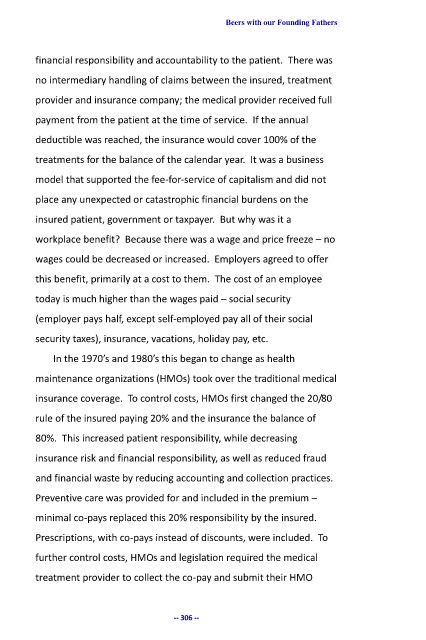Page 306 - Beers With Our Founding Fathers
P. 306
Beers with our Founding Fathers
financial responsibility and accountability to the patient. There was
no intermediary handling of claims between the insured, treatment
provider and insurance company; the medical provider received full
payment from the patient at the time of service. If the annual
deductible was reached, the insurance would cover 100% of the
treatments for the balance of the calendar year. It was a business
model that supported the fee-for-service of capitalism and did not
place any unexpected or catastrophic financial burdens on the
insured patient, government or taxpayer. But why was it a
workplace benefit? Because there was a wage and price freeze – no
wages could be decreased or increased. Employers agreed to offer
this benefit, primarily at a cost to them. The cost of an employee
today is much higher than the wages paid – social security
(employer pays half, except self-employed pay all of their social
security taxes), insurance, vacations, holiday pay, etc.
In the 1970’s and 1980’s this began to change as health
maintenance organizations (HMOs) took over the traditional medical
insurance coverage. To control costs, HMOs first changed the 20/80
rule of the insured paying 20% and the insurance the balance of
80%. This increased patient responsibility, while decreasing
insurance risk and financial responsibility, as well as reduced fraud
and financial waste by reducing accounting and collection practices.
Preventive care was provided for and included in the premium –
minimal co-pays replaced this 20% responsibility by the insured.
Prescriptions, with co-pays instead of discounts, were included. To
further control costs, HMOs and legislation required the medical
treatment provider to collect the co-pay and submit their HMO
-- 306 --

